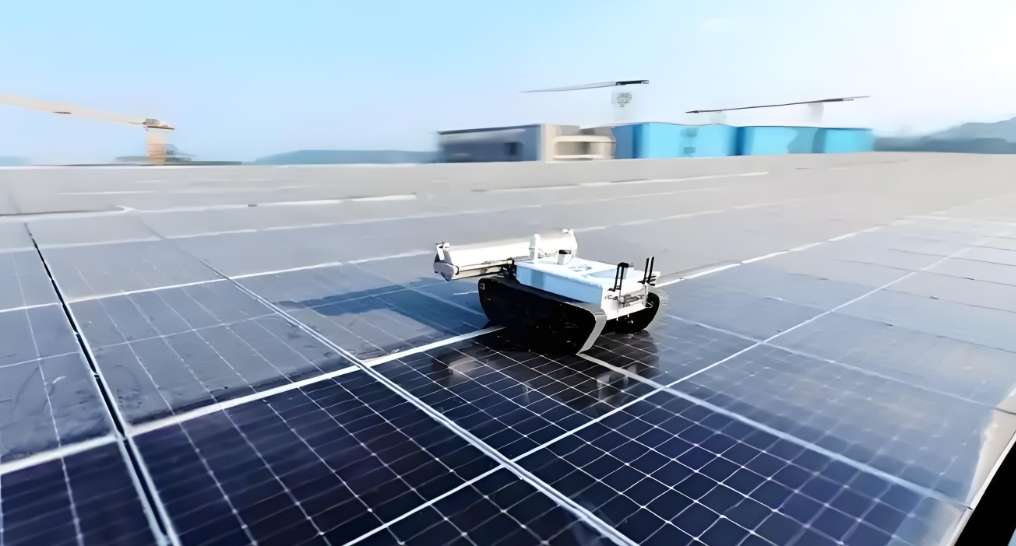
In the wave of new energy,the photovoltaic(PV)industry is booming like the rising sun.On this hopeful field,intelligent robots are gradually becoming indispensable"cultivators."They precisely install PV panels,efficiently clean the surfaces,and even participate in the inspection and maintenance of power stations.However,the core that supports the flexible operation of these robots—the joint components—faces many little-known challenges in processing and manufacturing.
Pain Point One:The Contradiction Between Lightweight and Strength,Material Selection and Deformation Control in Large-Component Machining
Photovoltaic robots often work in open outdoor areas,and their large size imposes strict lightweight requirements on the joints.Lightweight and high-strength materials such as aluminum alloys and titanium alloys are the preferred choices.However,problems arise when these materials are used to manufacture large metal parts(such as mechanical arm joints several meters long).During the CNC machining process,these parts are highly susceptible to deformation due to the internal stresses generated by material removal.Imagine that a seemingly minor machining error,amplified through multiple joints,could ultimately lead to a complete loss of positioning accuracy of the end effector.This requires the machining process to be as precise as"micro-carving,"with each cutting step precisely calculated and controlled to manage stress release.
Pain Point Two:Stringent Motion Accuracy Requirements,and Machining Challenges Posed by Complex Geometric Shapes
Robot joints are not simple rotating components.To achieve multi-degree-of-freedom flexible motion,their internal structures are often extremely complex—featuring irregular internal cavities,asymmetrical curved surfaces,precision bearing seats,and intersecting oil passages.This poses an ultimate test for the capability of turning and milling metal precision parts.In particular,when the parts are large in size,traditional three-axis CNC machines struggle to perform multi-angle,deep-cavity precision milling.Moreover,the temperature rise and vibration generated during the long machining time of large workpieces on the machine tool are"invisible killers"to precision control.How to ensure that the internal gear meshing or bearing fit of the joint remains precise and reliable during high-speed,heavy-load motion?This relies on advanced equipment such as five-axis联动processing centers,strict temperature control environments,and precise online measurement compensation technologies.
Pain Point Three:Durability Challenges in Harsh Environments,Surface Treatment and Special Protection
Photovoltaic power stations are often located in deserts,plateaus,or coastal areas.Robot joints must withstand not only wind,sun,rain,and snow but also the thermal expansion and contraction caused by diurnal temperature differences and even sand abrasion.This poses extremely high requirements for the surface treatment and overall protection of the joint components.Conventional coating or heat treatment processes may not be sufficient.For example,it is necessary to develop special composite coatings that can resist salt spray corrosion and reduce the friction coefficient of sand and dust.The design and machining accuracy of the joint sealing structure must ensure that it remains watertight even under extreme temperature differences.These special requirements elevate the processing and post-treatment of metal precision parts to a new dimension.
The Way Forward:Precision,Intelligence,and Collaboration
Faced with these pain points,the industry is actively seeking breakthroughs:
• Smarter CNC Machining Strategies:Implementing simulation-based machining parameter optimization to predict and control deformation during the machining of large parts;utilizing turn-mill compound machining centers to reduce the number of setups,thereby enhancing the integration,precision,and efficiency of complex structure machining.
• Advanced Materials and Processes:Exploring the application of high-strength lightweight composite materials and new surface strengthening technologies(such as low-temperature ion nitriding and special PVD coatings).
• Closer Industry Chain Collaboration:Joint designers,material experts,CNC machining engineers,and surface treatment suppliers need to collaborate deeply,working together from the design stage to the final manufacturing process to address challenges related to environmental adaptability and reliability.
The joints of photovoltaic robots are a complex combination of strength,precision,and endurance.Overcoming the challenges in the machining of large metal parts for these joints is not only crucial for the performance of individual robots but also affects the construction and operation efficiency of entire photovoltaic power stations,and even the pace of intelligent upgrading in the new energy industry.As CNC precision manufacturing technology deeply intersects with the complex requirements of robot joints,every technological breakthrough adds a solid foundation to the future of intelligent photovoltaics.